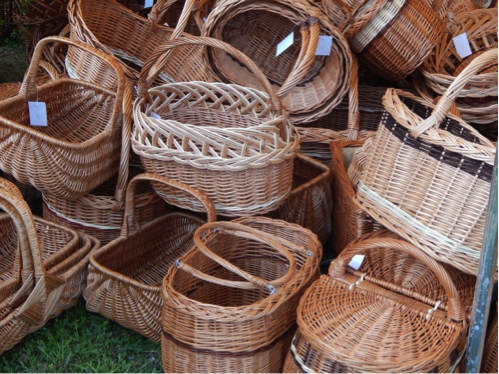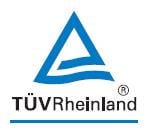By Dr. Nguyen Ba Hoai Anh, Director of Softlines Laboratory, TUV Rheinland Vietnam
Vietnam handicrafts’ export value reached US$1.6billion in 2014, achieving the target set for 2015 by the Ministry of Agriculture and Rural Development a year earlier. The European Union (EU), the US and Japan are key markets for Vietnamese handicraft exports. Each market has its own requirements for imported products and manufacturers must understand and comply to ensure your access to the different markets.

Requirements of US market
Handicrafts / Art materials imported into the U.S. may be subject to more than one regulation / standard. All art materials are subject to LHAMA regulations, which may involve review by a Board Certified Toxicologist for compliance with ASTM D4236.
Depending upon the specific nature of the product – including if it is intended for children or adults, for example – these products may fall under more than one compliance category and other standards may apply, including ASTM F963 (toys), 16CFR, and others.
Requirements of Japan market
Meanwhile there is no mandatory requirement on handicrafts in general and import of handicrafts into Japan. However, following rules may apply for “handicrafts” depending on the product category and characteristics:
1) Mandatory regulation for import (import is not possible without fulfilling the requirements)
Food Contact Material (FCM) products are subject to Food Sanitation Act - Ministry of Health, Labour and Welfare (MHLW)
2) Mandatory regulation for sales/distribution (import is possible but must fulfill the requirements at the point of sales)
Apparel and Household Goods are subject to Household Goods Quality Labeling Act - Ministry of Economy, Trade and Industry (METI)
Consumer Goods are subject to Act on Control of Household Products Containing Harmful Substances - Ministry of Health, Labour and Welfare (MHLW)
Requirements of EU market and notes for manufacturers
EU is the market with strict import requirements. Many Vietnamese companies are not aware that certain chemicals that are used in the production of handicraft products are strictly restricted. As a result, 90% of the handicrafts that were sent to TŰV Rheinland Vietnam for testing failed at the first test and only passed the test after more than two tests after replacements were made to the raw materials and substances. Vietnamese companies should check chemicals that were used to ensure that they comply with EU’s requirements. They should also pay attention to the regulations that are applicable for special types of products.
Usage of chemicals
Glue
During manufacturing process, glue is used for connecting different parts of a product. Glue is commonly used on bamboo and rattan products for the same purpose. There are different types of glue in the market, with some containing complex ingredients that may contain formaldehyde, one of the banned substances in EU. It is important to test the glue before bulk purchase to ensure that it complies with the requirements of EU market as products with formaldehyde in glue are prohibited from being imported to EU.
Studies have indicated that formaldehyde is a known human carcinogen. Forbiddance of formaldehyde is mentioned in German chemicals prohibition ordinance and EU food contact regulation.
Chemicals in prevention of mold
Chemicals are used on bamboo, rattan and other wooden materials to make them resistant to mold. Some chemicals used to prevent mold, such as Chlorinated Phenol (Pentachlorophenol – PCP, Tetrachlorophenol – TeCP, Trichlorophenol - TCP), are banned and strictly controlled in products imported to EU.
PCP is very toxic and is regarded as a human carcinogen. These chemicals are restricted by REACH 1907/2006/EC Annex XVII and banned in some EU countries (Germany, Switzerland, Denmark)
It is also important to note that during agriculture and forestry, chemicals like Carbendazim is widely used as a fungicide for trees. When these trees are harvested, they are placed close to raw materials used for handicraft such as bamboo and wood. This can lead to cross pollution in material and should be noted in manufacturing as Carbendazim residual can be found on the raw materials used to make handicraft.
Studies have found high doses of Carbendazim can cause infertility and destroy the testicles of laboratory animals. As Carbendazim is a pesticide, it must not exceed the acceptant limit, which varies according to product.
Paint and varnishes
Paint and varnishes are necessary for decoration of handicrafts. Manufacturers must strictly adhere to the requirements as follows:
- Colors shall not fade and will not leave stains on clothes
- Phthalate content shall not exceed the acceptable limit
- They shall not contain banned azo dyes, Polycyclic aromatic hydrocarbons (PAHs), Formaldehyde
- They contain PAH
- They contain formaldehyde
- Lead content shall not exceed the acceptable limit
These compounds are absorbed or remained in final product and are bad for health.
Substances should be checked
Handicraft product is produced from many sources of raw material and each of them can have a different source of risk and needs to be checked individually, for example:
- Pesticide from raw material from wood, bamboo
- Heavy metal for raw material from metals or dyes
- Banned azo dyes
Regulations applying for special types of products
Many products are designed for dual purposes, such as bowls made of bamboo or wood. They can be used as decoration as well as serve as food containers. EU requires these products to be tested according to the requirements of decoration articles and also food contact articles. The requirements of color, chemical, smell infection need to be strictly controlled.
Products which can be as used as toys for children will be checked even more stringently. The limit of chemical is much lower than the products that are designed for adults use. Sharp edges and sharp points which may be dangerous for children are also one of the EU restrictions.
Conclusion
In conclusion, for your products to comply with imported markets, you should cooperate closely with your suppliers through your supply chain and third party testing to know exactly the technical requirements for your specific products.
For more information on our product testing solutions, please visit our website or contact us to speak to one of our experts.



